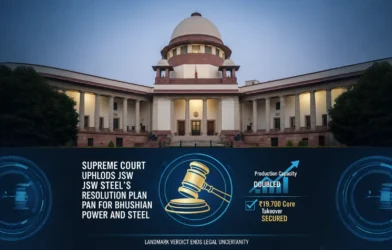Author: Aditya Pareek | EQMint | General News
This Diwali may look and sound a little different — but not entirely silent. In a significant development for festival-goers, the Supreme Court of India has approved the use of “green crackers” for two days during Diwali, signaling a cautious return to celebrations while still factoring in environmental concerns.
What the Supreme Court Decided
On Friday, the Supreme Court announced that the use of certified green crackers would be permitted for two days during Diwali. Chief Justice B. R. Gavai clarified that this relaxation is applicable “for the time being,” hinting that it might be subject to further review or conditions.
In the hearing, Senior Advocate J. Sai Deepak argued for an extension to include two morning hours as well, to accommodate different community practices. In response, Solicitor General Tushar Mehta stressed the diversity of Delhi’s population and the need to account for celebrations occurring at different times of day.
Importantly, while this ruling allows usage, it does not lift all restrictions. Manufacturers already certified to produce green crackers had been allowed earlier to resume production, but the sale of crackers remains restricted in the Delhi–NCR region. The court also called on the Union government to reconsider blanket bans on firecracker manufacturing in the national capital region.
Context: Why This Decision Matters
Cracker bans and restrictions have long been a contentious issue in India. Year after year, courts and environmental bodies raise alarms about air pollution, especially PM2.5 and PM10 particulate matter that skyrockets during festive periods. At the same time, fireworks and crackers remain closely woven into the cultural fabric of celebrations like Diwali, Eid, Christmas, and Guru Nanak’s birthday.
Last month, in a related move, the Supreme Court had already allowed certified manufacturers to produce green crackers, even while maintaining usage or sales restrictions in some areas. This latest decision is a further step—rather than a sweeping rollback.
The court’s call to reconsider bans indicates it may view blanket restrictions as too blunt a tool, especially when mitigated alternatives exist. Green crackers are marketed as lower-emission alternatives, often crafted with “less-polluting” chemical compositions, though studies remain mixed about their real-world environmental impact.
Reactions from the Ground
Delhi Government & Officials
Delhi Chief Minister Rekha Gupta welcomed the Supreme Court’s decision. She stated that the Delhi government will support the use of green crackers during the festival period, aiming to enable residents to “celebrate responsibly and with joy.” Her position underscores a desire to balance festive spirit and public well-being — though actual enforcement and regulation will be key.
Advocates & Environmental Groups
Some environmental activists view the decision cautiously. While green crackers are marketed as cleaner, they are not emission-free. Critics caution that even reduced emissions, when multiplied across thousands of celebrations, can stress air quality, especially in a city already battling pollution levels.
Legal minds and public interest litigators may now press the court for stricter guidelines — limiting quantities, capping duration, or enforcing technological standards to ensure that the “green” label carries substance, not just marketing.
Affected Citizens & Retailers
For many households, this judgment offers relief. After years of strict bans or limited timings, buyers may now feel a sense of festive normalcy returning. Retailers licensed to sell green crackers (where permitted) may see increased footfall, though supply and certification will be crucial.
However, in the National Capital Region, where cracker sale is still restricted, citizens may continue to face shortages or rely on neighboring jurisdictions to access green crackers. Enforcement agencies will need to monitor illicit or non-certified products.
Key Challenges & Considerations Ahead
-
- Certification and Compliance
Allowing green crackers hinges on verifying that products genuinely adhere to emission norms. Oversight is required to prevent misuse or mislabeling.
- Certification and Compliance
-
- Timing & Usage Limits
The court’s approval for “two days” leaves open the question of specific hours. Without clear limits, misuse is possible — midnight bursting or extending into multiple hours could negate environmental benefits.
- Timing & Usage Limits
-
- Regional Enforcement
Even after the court’s relaxation, local governments (e.g. in Delhi-NCR) may implement stricter rules. Coordination across municipal bodies, police, and pollution control boards is crucial.
- Regional Enforcement
-
- Public Awareness
Consumers must be informed about what constitutes a certified green cracker, how to purchase legally, and why it matters. Education is key to curbing illegal or harmful alternatives.
- Public Awareness
-
- Long-Term Policy Balance
The court’s order may prompt the government to revisit broader policies: whether to allow limited usage across festivals, impose quotas, or enforce technological innovation in fireworks to align with environmental norms.
- Long-Term Policy Balance
Looking Ahead
This Supreme Court decision marks a compromise between environmental and cultural priorities. It suggests the judiciary is leaning toward regulated permission rather than blanket prohibition. Whether this sets a new precedent—or remains a temporary relaxation—depends on enforcement, public response, and follow-up policy measures.
For millions planning this year’s Diwali, it may translate into the crackle of a few safe, green crackers—just enough sparkle to bring back tradition, without choking the air.
Disclaimer: This article is based on information available from public sources. It has not been reported by EQMint journalists. EQMint has compiled and presented the content for informational purposes only and does not guarantee its accuracy or completeness. Readers are advised to verify details independently before relying on them.






